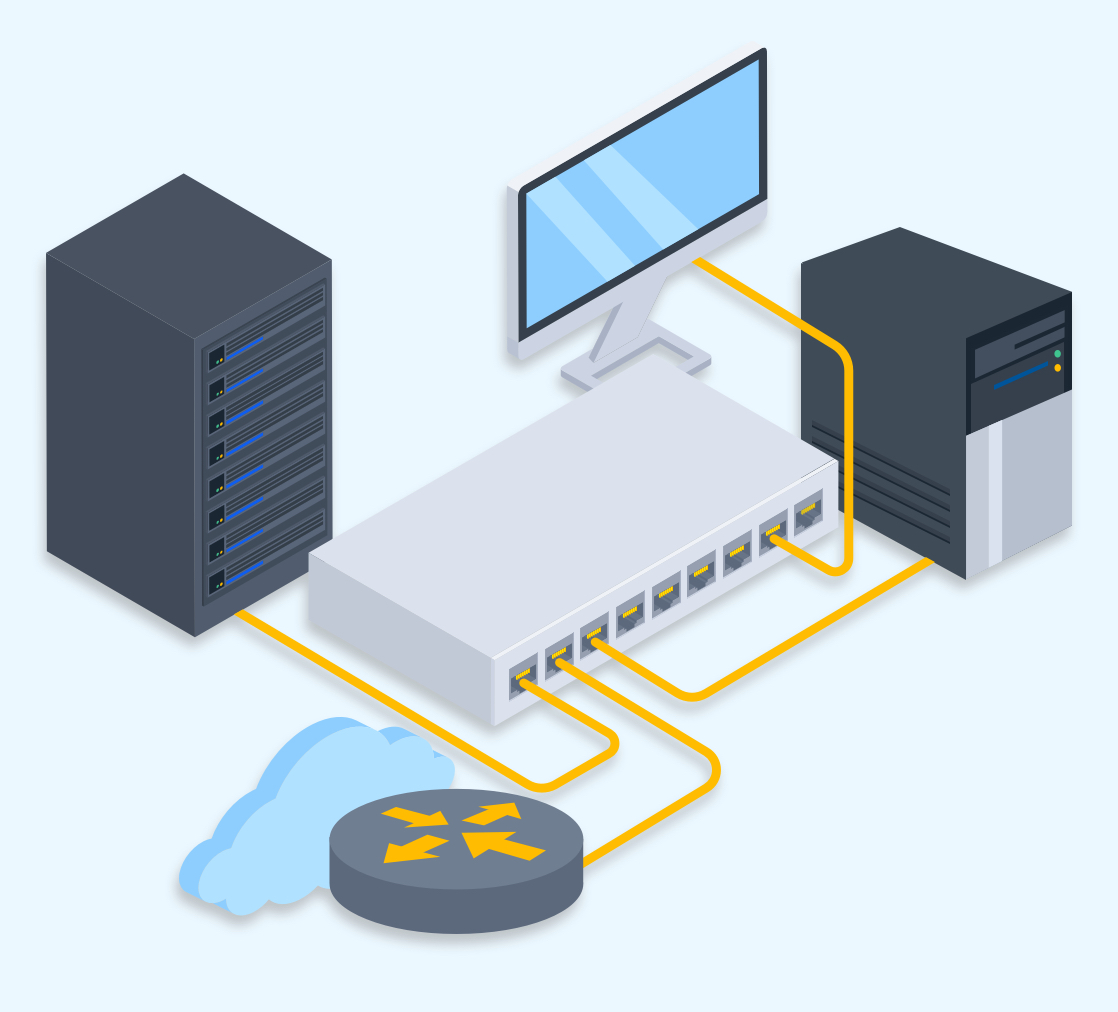
About Switches & Routers
We provide a family of switching & routing products that exceeds all prospects for building the network needed.
Switches and routers are fundamental devices used in computer networking, each serving a distinct purpose. A switch is primarily used to connect multiple devices such as computers, printers, and servers within a local area network (LAN). It operates at the Data Link Layer (Layer 2) of the OSI model and uses MAC addresses to identify devices and forward data directly to the intended recipient. This targeted data delivery helps reduce network congestion and improves overall efficiency. Switches allow full-duplex communication, meaning data can be sent and received simultaneously, and they create a separate collision domain for each connected device, which enhances performance in busy networks. On the other hand, a router connects different networks together, such as linking a home or office network to the internet. Routers operate at the Network Layer (Layer 3) and use IP addresses to determine the best path for forwarding data packets. They are capable of performing complex tasks such as routing traffic, assigning IP addresses via DHCP, and translating private IP addresses to public ones using NAT (Network Address Translation). Routers often include built-in firewalls and provide security features to protect data as it moves between networks. In summary, switches are best suited for internal data exchange within a single network, while routers are designed to manage data traffic between multiple networks. Both play a crucial role in ensuring seamless and efficient communication in any networking environment.
Switches and routers are essential devices in computer networking. Here’s a clear and concise explanation of both:
Switches
Routers